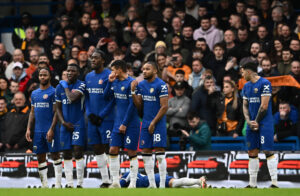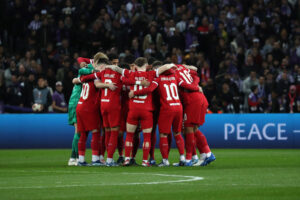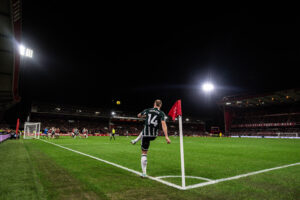Noam Chomsky, the great American linguist and theorist, once said that if the average American’s understanding of the complex mathematics of baseball could only be applied to other areas of life, then America would be a nation of mathematicians.
The same is true of football and the rest of the world; if the average football fan’s knowledge of football history (especially their own club or country’s history) could be applied to other areas of life, then the world would be one full of historians.
Fans who might otherwise have no interest in history still know all about the great figures from their own football team’s past.
Consequently, as Arsenal and Wolves prepare to meet in the Premier League this weekend, there will be many memories of the greatest managers in the history of the two clubs, Herbert Chapman and Stan Cullis, especially when they had one thing in common: a belief in the importance of European club football.
Chapman and Cullis European Dream Remembered
Chapman’s status in the history of the game is secure, especially among Arsenal fans. His nicknames include “The Emperor of Football”, or “The Frank Capra of Football”; because just as Capra (the creator of “It Happened One Night” and “It’s A Wonderful Life”) effectively established the profession of film director, so Chapman effectively established the profession of football manager.
His feats at Arsenal, and indeed at Huddersfield before he came to London, are well-known: winning a hat-trick of league titles at Huddersfield between 1924 and 1926; leading Arsenal to their first ever trophy (the FA Cup) in 1930 and their first league title a year later; and above all setting Arsenal on the path to becoming the first world-famous football club, a legacy that is still evident today in the extraordinary number of clubs carrying the name “Arsenal” around the world, from Argentina to Ukraine.
Legendary Innovator
What is less well-known about Chapman is that he envisaged European club football a full two decades before it actually came into existence. Chapman was a ceaseless innovator on and off the pitch.
For example, he famously had the Gillespie Road tube station renamed Arsenal, literally putting the club, which never found success to that point, on the map.
It was in this vein that, having dominated English football for nearly a decade, first with Huddersfield and then with Arsenal, he first began to dream of pitting his great Arsenal side against the best club sides that continental Europe could offer.
Tragically, Chapman died on 6 January 1934, aged only 55, after contracting pneumonia while watching a third team match, and so he did not see his “European dream” come to fruition.
Nevertheless, his vision of midweek games between teams from different countries being played under floodlights (another development that Chapman was instrumental in popularising), was exactly what European club football became two decades after his death.
Battle of Highbury
In fact, although Chapman’s Arsenal did not compete against the best that European club football had to offer, they effectively did compete against, and defeat, the best that world football had to offer.
That was in the infamous “Battle of Highbury” on 14 November 1934, less than a year after Chapman’s untimely death, when an England side containing no fewer than seven Arsenal players beat the reigning World Cup Champions, Italy, at Arsenal’s home ground.
At a time when English football was so secure in its own supremacy that it did not bother to send a team to the first two World Cups (in Uruguay in 1930 and in Italy in 1934), the match was seen as an unofficial “World Championship decider”.
The fact that Arsenal/England won 3-2 was proof of the greatness of Chapman’s side, although the violent nature of the match did little to promote the international goodwill that Chapman always thought would be a by-product of international sporting competition.
The onset of the Second World War put paid to most domestic football in Europe, let alone any prospect of international club football. Therefore, it was only in the 1950s that Chapman’s idea of European club competition came back into vogue.
Rise of Cullis and Wolves
By then, however, it was not Arsenal who were championing the cause but their successors as the dominant force in English football, Stan Cullis’s Wolverhampton Wanderers.
Cullis is one of the best examples of the old adage that failed players often make the best managers because those players often channel all the frustrations of their unsuccessful playing career into succeeding as a manager.
Usually, it is injury that is responsible for such managerial careers, as in the case of Brian Clough and Eddie Howe (to name but two). In Cullis’s case, however, it was the onset of global conflict that put paid to his playing ambitions.
Cullis had played as a centre-half in the fine Wolves team before the war, which in 1939 almost did the league and cup double before they collapsed at the end of the season in the league and then lost the FA Cup Final to Portsmouth 4-1.
Then, before Cullis and the other Wolves players could avenge that crushing defeat, war broke out and, like so many other European players of his vintage, Cullis lost the best years of his career to military service, during which he worked for the British armed forces as a physical instructor.
Soon after the war, in 1948, Cullis became the manager of Wolves. Apart from an FA Cup win in 1949, the first five years of his reign were largely spent watching Arsenal reassert their old pre-war dominance.
That finally came to an end in 1953, when the Gunners won their last trophy until their re-emergence in the early 1970s. Wolves then filled the vacuum left by Arsenal and won their first ever league title in 1954.
However, it was what followed next that showed how Cullis thrillingly realised Chapman’s European ambitions.
European Club Champions
International football between countries was old news, but international football between club sides was still not a reality in the mid-1950s.
However, in the wake of England’s humiliating pair of defeats to the great Hungary side of Puskas et al (6-3 at Wembley in late 1953 and 7-1 in Budapest in early 1954), the idea began that the best club sides from the two countries should play each other.
Thus it was that just before Christmas in 1954, Wolverhampton Wanderers of England played Honvéd FC of Hungary, supposedly in a friendly but in reality for the unofficial title of “European Club Champions”.
The match brought Chapman’s dream to life; two champion sides facing each other (indeed, Honvéd contained many members of the Hungarian national side, including Puskas himself); football under floodlights that lent the game the kind of innate theatrical quality that is still seen on the best Champions League nights today; and it was even broadcast live on the BBC, at a time when the only football matches that were ever broadcast live on television were the FA Cup Final and the odd England international.
Momentary Success
Wolves were led by the great defender Billy Wright, who had endured personal humiliation at Wembley when Puskas’s famous drag back before Hungary’s third goal put him out of the game.
However, Wright and indeed English football as a whole gained some measure of revenge as Wolves eventually won a genuinely classic match 3-2. And just like the Arsenal/England side that had beaten World Cup winners Italy two decades earlier, Cullis claimed that his Wolves side were the true “Champions of the World”.
It was precisely because journalists from continental Europe, notably Gabriel Hanot of L’Équipe, disagreed with that assessment, claiming that Wolves had only won because of the muddy Molineux pitch, that within a few weeks L’Équipe proposed a genuine, bona fide “European Cup”, to be contested by the champions of every country in Europe (even those that were now under Communist rule in Eastern Europe).
And in just over 18 months’ time, at the start of the 1955-56 season, the European Cup – the precursor to the Champions League – began.
Lasting Legacy
Neither Arsenal nor Wolves have excelled in Europe much since, with Arsenal winning only two European trophies (the 1970 Fairs or UEFA Cup and the 1994 Cup-Winners’ Cup) and Wolves reaching only one European final (the two-legged 1972 Fairs or UEFA Cup Final, which they lost to Spurs).
Chapman and Cullis both dreamed of pitting their sides – the Champions of England – against the best that continental Europe had to offer. Although Chapman died before his dream came true, Cullis saw his realised.
What is also worth emphasising now, at a time when yet again there is much talk of the creation of a “European Superleague”, is that both men would have loathed the idea of the kind of closed shop for the big clubs that is currently under proposal.
Having first achieved success at smaller regional clubs like Huddersfield and Wolves, they both passionately believed in the importance of competition in football at all levels.
They would certainly never have agreed with the model now being proposed, whereby clubs like Huddersfield and Wolves (and Leeds and Valencia and Hamburg, all of whom have reached, and in Hamburg’s case actually won, European Cup finals) would never have the chance of even competing for the ultimate prize in club football.
Main Image Credit:
Embed from Getty Images






